As a Ha Giang-based travel company, Phieu Travel welcomes you to the Dong Van Karst Plateau – Vietnam’s first UNESCO Global Geopark. This highland destination is famous for its rugged limestone landscapes, historic ethnic villages, and scenic mountain roads that offer unforgettable views.
In this guide, we’ll help you plan every step of your journey. From how to get there, when to go, where to stay, to the must-visit landmarks and local dishes – everything you need is right here. Let’s dive in together!
1. About Dong Van Karst Plateau
Covering 2,356 km² in Ha Giang, Dong Van Karst Plateau blends striking limestone peaks with rich ethnic cultures. Let’s explore what makes its location and heritage truly unique!
1.1 Location and unique features
Dong Van Karst Plateau is located in Ha Giang, the northernmost province of Vietnam. This UNESCO Global Geopark spans over 2,356 square kilometers (910 square miles) and covers four highland districts: Quan Ba, Yen Minh, Dong Van, and Meo Vac.
Roughly 60% of the plateau is composed of ancient limestone, featuring jagged cliffs, deep canyons, and karst formations that formed over 500 million years. The region includes geological layers from seven major periods, with visible evidence of mass extinction boundaries and rare fossil records.
Mieu Vac Peak rises to 1,971 meters (6,466 feet), while Tu San Canyon plunges nearly 800 meters (2,625 feet), making it one of the deepest gorges in Southeast Asia. With its rugged karst terrain and sweeping highland views, Dong Van offers travelers a striking introduction to the geological diversity of northern Vietnam.
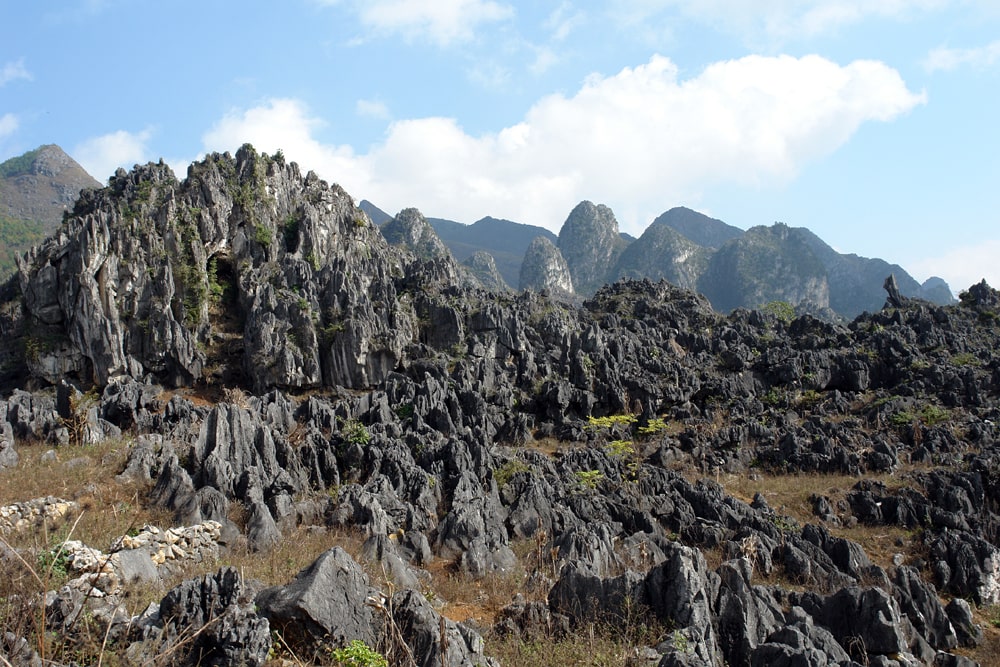
1.2 The outstanding values of Dong Van Karst Plateau
More than just a scenic highland, Dong Van Karst Plateau is a rare living archive of Earth’s evolution and cultural resilience. Its designation as a UNESCO Global Geopark reflects not just its visual grandeur, but the layers of meaning embedded across five key dimensions:
- Geological value
With rock layers spanning over 500 million years, the plateau reveals seven major geological periods and fossil remains of 19 ancient species such as crinoids, trilobites, and conodonts. It is also one of the few places on Earth to display both Frasnian–Famennian and Permian–Triassic extinction boundaries within a single, compact area.
- Geomorphological value
Dong Van’s landscape features jagged limestone peaks, active fault lines, and deep sinkholes formed by tectonic movement and tropical erosion. The Tu San Canyon, carved by the Nho Que River, drops nearly 800 meters (2,625 feet), ranking among the deepest gorges in Southeast Asia. These formations serve as a natural record of tectonic uplift, ideal for karst geomorphology studies in humid tropical zones.
- Ecological value
Two protected reserves within the plateau support diverse flora and fauna, including species adapted to high altitudes and limestone habitats. The Tonkin snub-nosed monkey, once believed extinct, was rediscovered here in the 1990s. Other rare species include black bears, southern serows, and endemic conifer plants, making the area a biodiversity hotspot.
- Cultural value
The plateau is home to more than 17 ethnic minority groups, including the H’mong, Tay, Nung, Lo Lo and other highland communities. Their traditional lifestyles – reflected in stone house architecture, flax weaving, and ceremonies like the Gau Tao festival – demonstrate deep resilience and harmony with the mountainous environment. Culture and landscape here are inseparable.
- Tourism & educational value
More than a destination, Dong Van serves as an open-air classroom where geology meets anthropology. Visitors can engage in guided treks, cultural exchanges and field-based learning. Unlike conventional tourist zones, this geopark encourages meaningful travel by blending scientific insight with authentic local experiences.

The Ultimate Ha Giang Loop Guide (2025): Itinerary, Map & Tips
2. How to get to Dong Van Karst Plateau
Most travelers begin their journey to Dong Van Karst Plateau by passing through Ha Giang City. Depending on your location, there are different ways to reach Ha Giang before continuing deeper into the geopark.
- From Northern provinces (Sapa, Cao Bang, Lang Son,…)
You can travel to Ha Giang City by motorbike, local bus or private car. The ride is scenic but challenging, especially by motorbike and takes five to seven hours depending on the starting point. Motorbike is a scenic and flexible option, especially for adventure travelers. Public buses and minivans operate daily and are affordable. Private car hire offers comfort and convenience for families or small groups
Once in Ha Giang, take National Highway 4C for about 150 kilometers (93 miles) to reach Dong Van. The drive, which passes through Quan Ba, Yen Minh, and Ma Pi Leng Pass, typically takes four to five hours. Many travelers choose to rest one night in Ha Giang before continuing deeper into the plateau.
- From Central or Southern Vietnam (Ho Chi Minh city, Da Nang, Nha Trang,…)
The most efficient option is to fly to Hanoi’s Noi Bai Airport, then travel 320 kilometers (199 miles) to Ha Giang by sleeper bus, limousine, or private car. Buses take six to seven hours, with sleeper buses running at night and VIP options offering more comfort by day. From Ha Giang, follow Highway 4C for another 150 kilometers (93 miles) to reach Dong Van.
3. Ideal time to visit Dong Van Karst Plateau
The best time to visit Dong Van Karst Plateau is from October to April, when the weather is dry, cool and ideal for exploring the highlands. During these months, temperatures average between 21 and 23°C (69 to 73°F), with clear skies and minimal rainfall.
From October to November, buckwheat flowers bloom across the terraced hills, covering the valleys in soft shades of pink and purple. Between January and February, the landscape transforms again as peach and plum blossoms emerge, adding vibrant colors to moss-roofed villages.
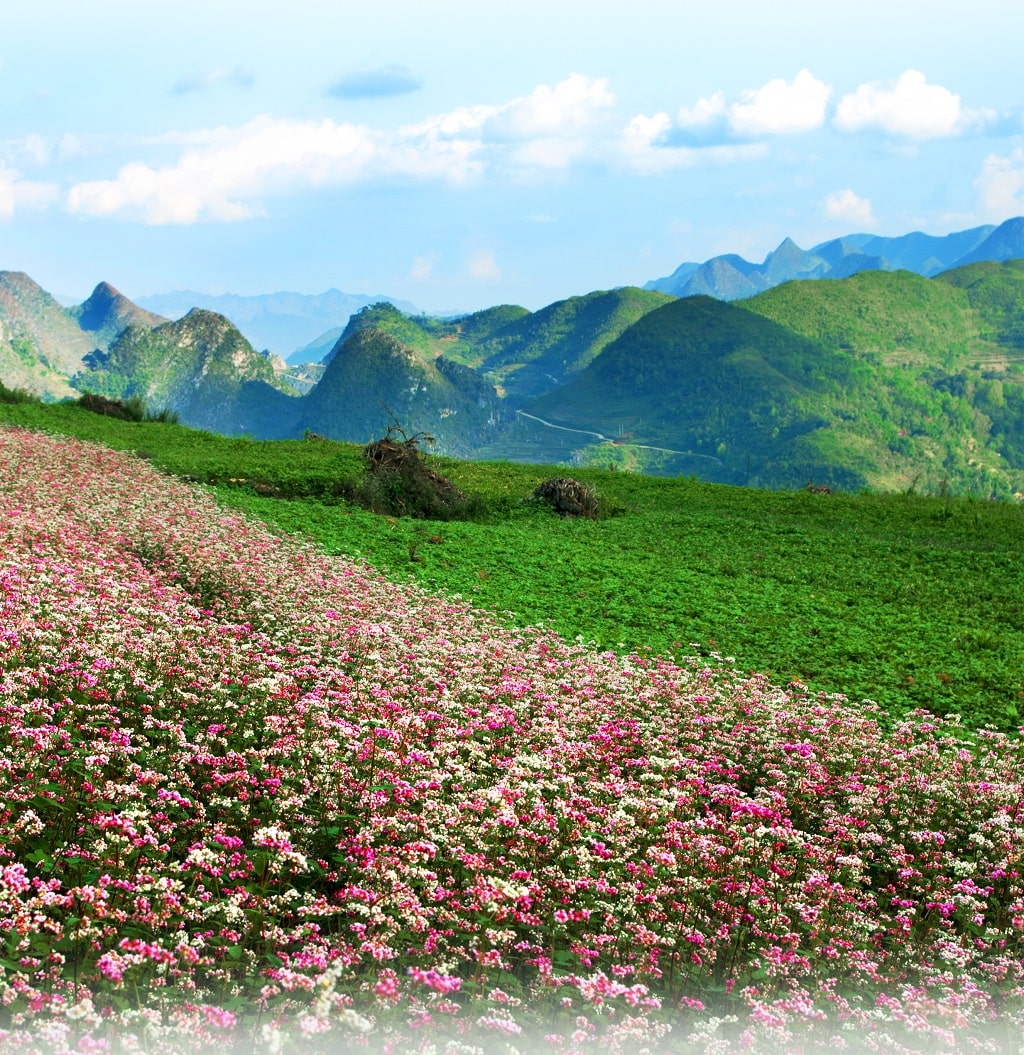
Ha Giang in August: Weather, Things to Do & Travel Tips
4. Things to do in Dong Van Karst Plateau
Dong Van offers a blend of natural wonders and cultural highlights. From mountain passes and ancient villages to weekend markets and local cuisine, this region promises memorable experiences for every traveler. Let’s discover the top things to do!
4.1 Visit famous tourist attractions
The Dong Van Karst Plateau stretches across four districts in Ha Giang: Quan Ba, Yen Minh, Dong Van and Meo Vac. Along the journey on Highway 4C, you’ll encounter the region’s most iconic landmarks, such as:
4.1.1 Lung Cu Flag Tower
Lung Cu marks Vietnam’s northernmost point and flies a 54 m² flag representing the unity of 54 ethnic groups. Built in 2010 atop Dragon Mountain, the tower offers sweeping views of Dong Van’s rugged border landscape.
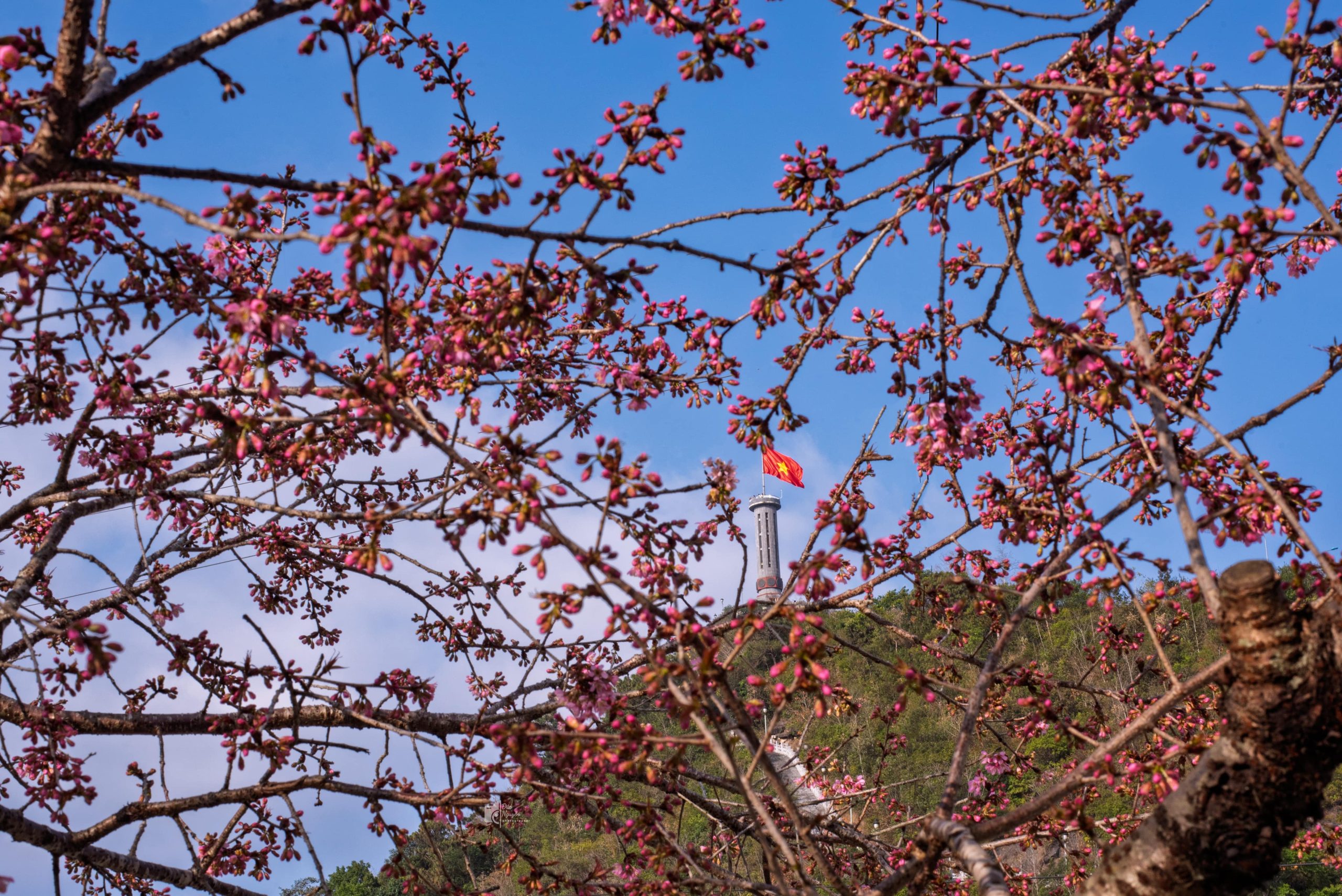
4.1.2 Ma Pi Leng Pass
Rising to 1,500 meters (4,921 feet), Ma Pi Leng is among Vietnam’s most dramatic mountain passes. Its sharp curves and cliffside views reveal canyons, limestone ridges, and the turquoise Nho Que River flowing far below.

4.1.3 The H’Mong King’s Palace
Located in Sa Phin, 14 km (8.7 miles) from Dong Van, this 64-room mansion was built in 1919 by the Vuong family. Its blend of Chinese and H’mong architecture reflects the wealth and power of H’mong culture in the early 20th century.

4.1.4 Nho Que River
Flowing beneath Ma Pi Leng Pass, Nho Que River is known for its emerald color and canyon-carved path. Boat rides and kayaking offer immersive ways to admire one of Vietnam’s most scenic river landscapes.
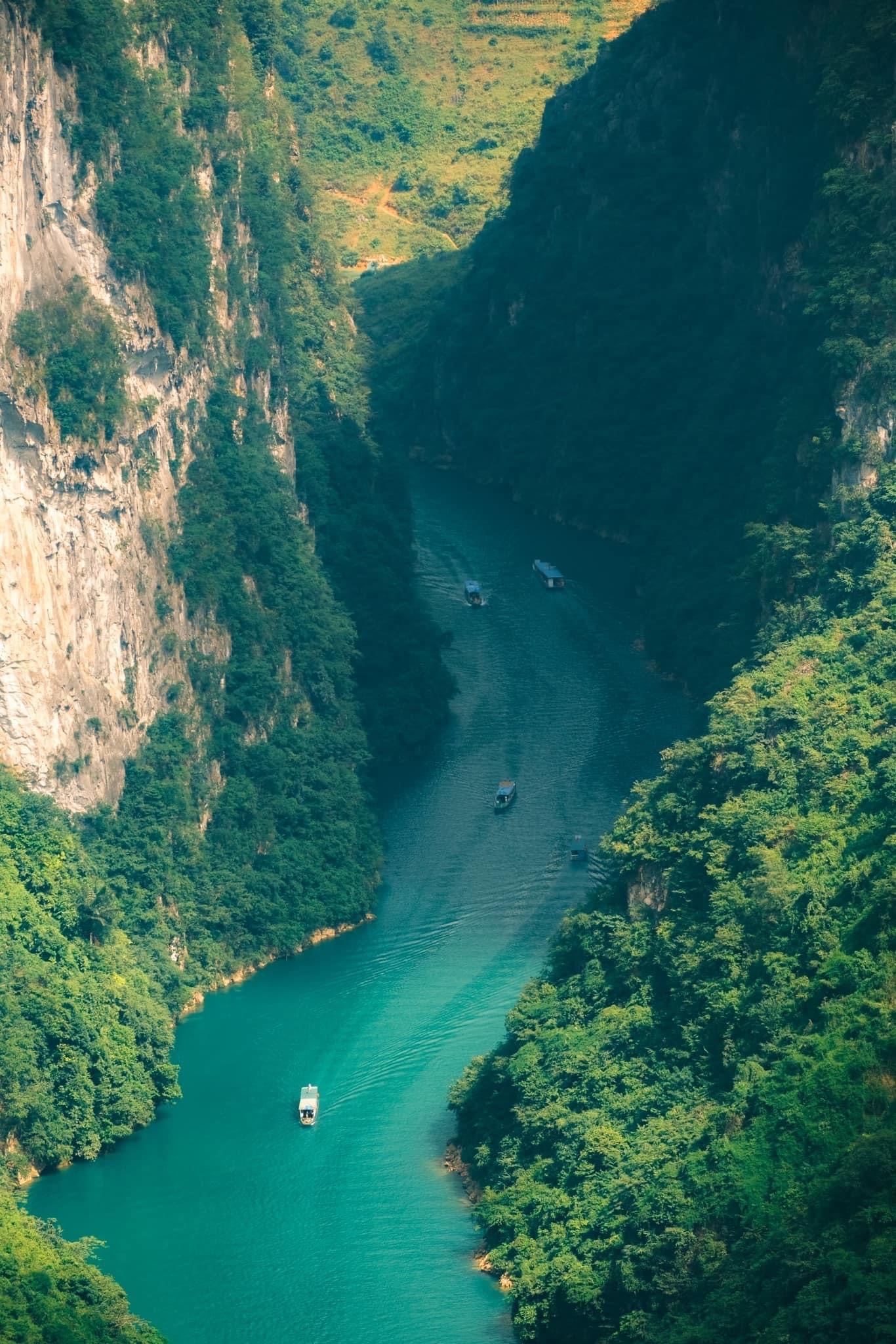
4.1.5 Quan Ba Heaven Gate
At 1,500 meters (4,921 feet) above sea level, Quan Ba Heaven Gate marks the entrance to the plateau. From here, visitors enjoy panoramic views of terraced valleys and the famous Twin Mountains.
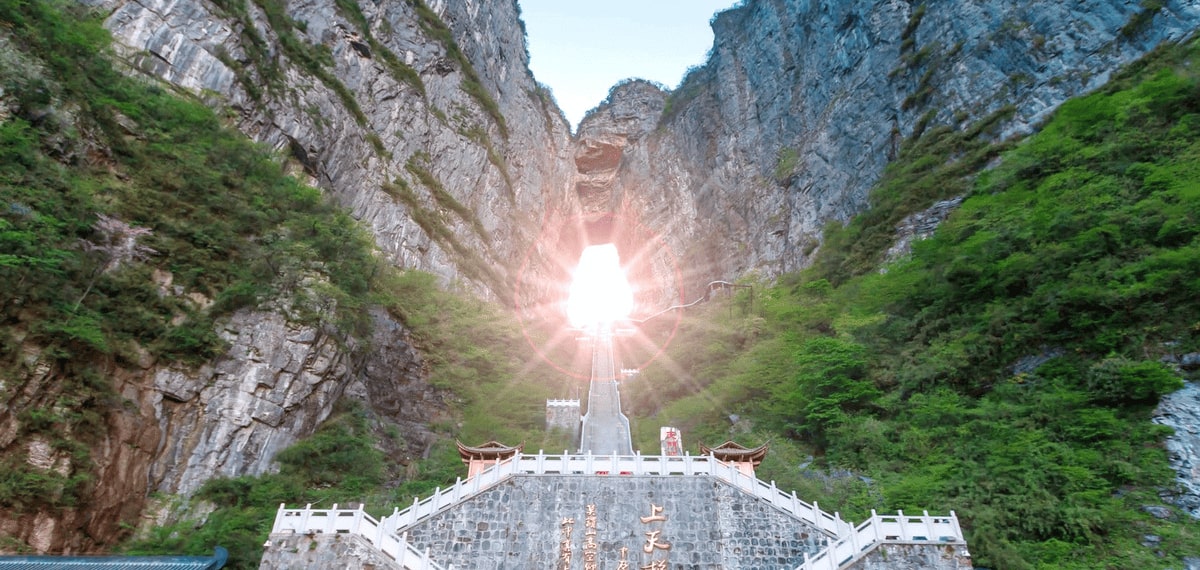
4.1.6 Dong Van Old Quarter
This 100-year-old town features over 40 ancient houses with yin-yang rooftops and Chinese-style design. On full-moon nights, red lanterns light up the streets as locals host markets, food stalls, and cultural events.
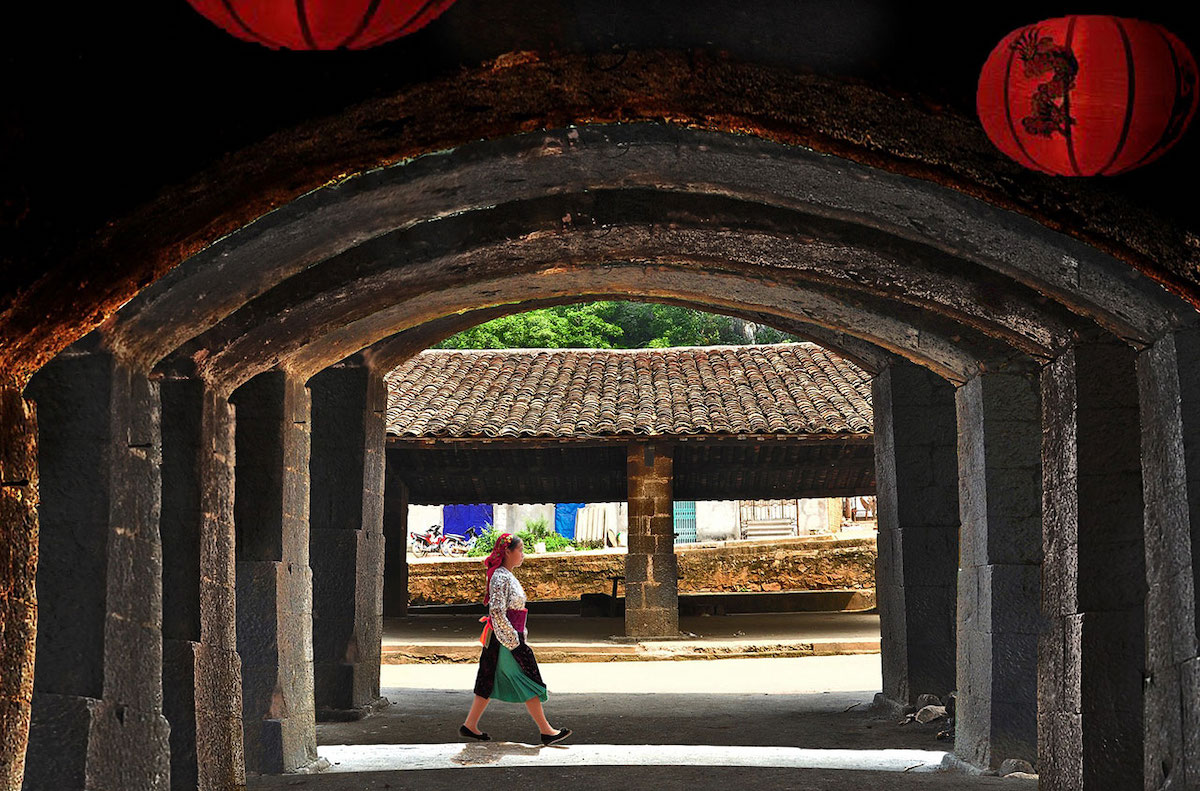
4.1.7 Sung La Valley
Located 20 km (12.4 miles) from Dong Van, Sung La captivates visitors with springtime flower fields and the quiet beauty of Lung Cam Village. The area appeared in the acclaimed Vietnamese film Pao’s Story.
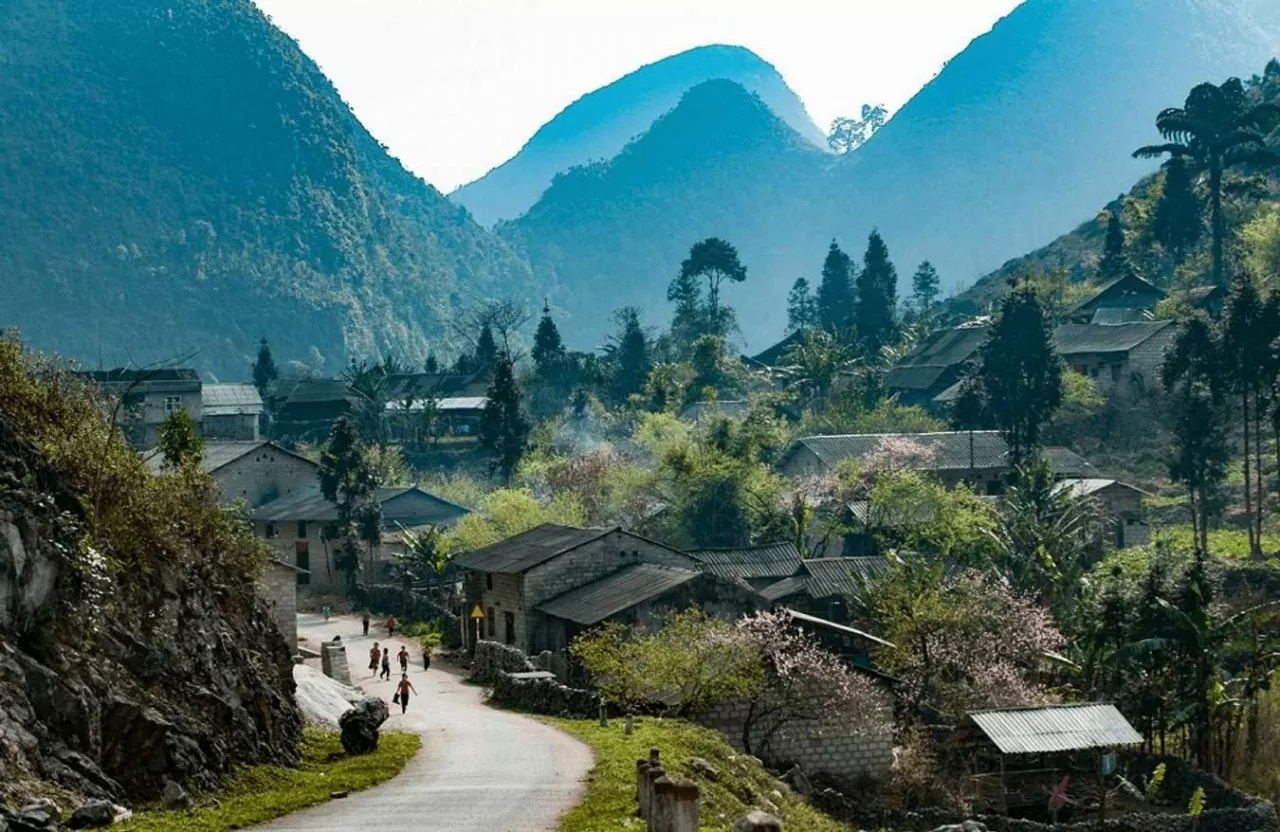
4.1.8 Ma Le Village
Near Lung Cu, Ma Le is home to the Lo Lo ethnic group. Surrounded by rice terraces and stone houses, it offers visitors a chance to explore daily life, traditional customs and authentic highland culture.
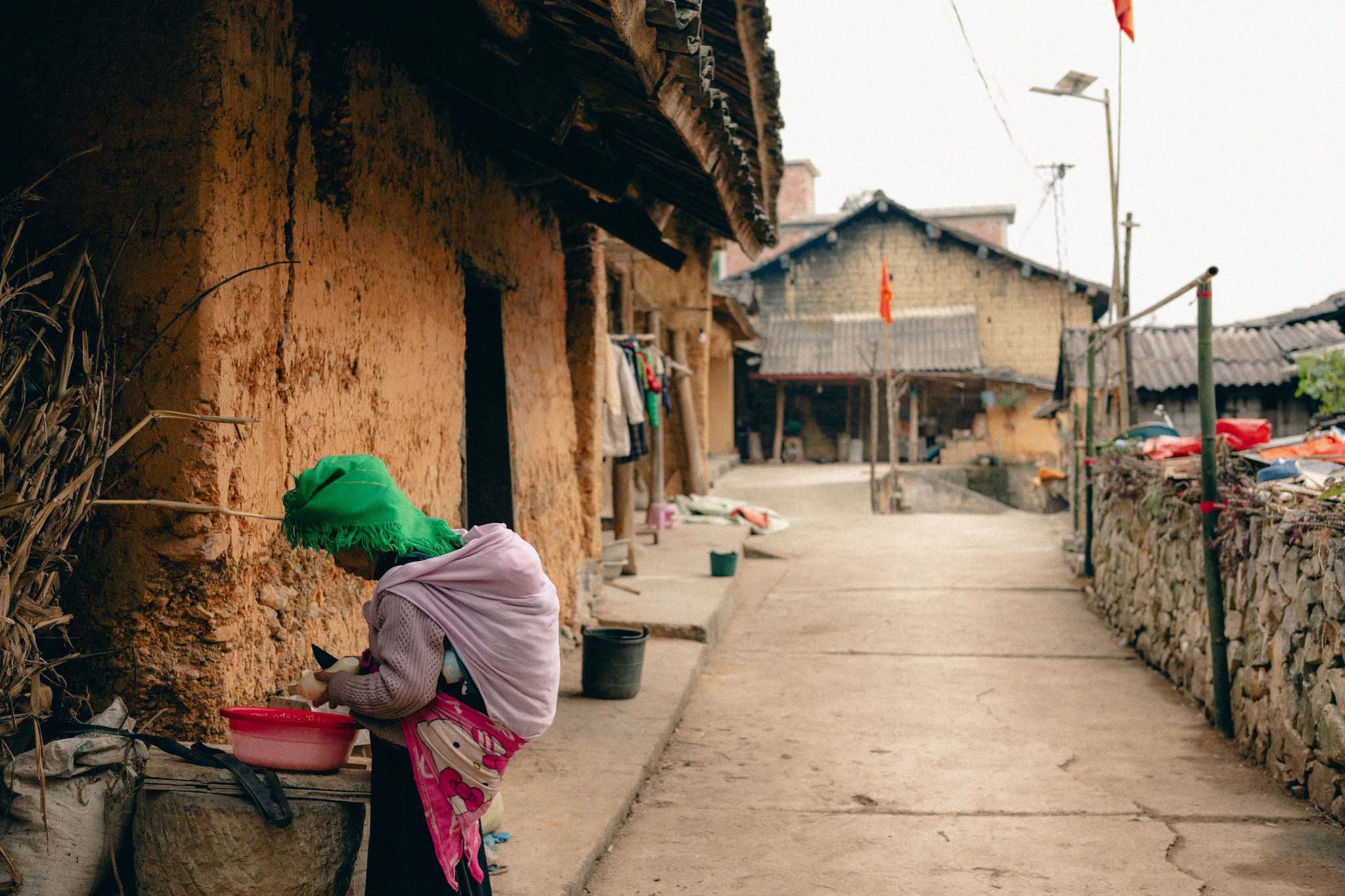
Ha Giang Loop vs Sapa? The Ultimate Guide for Solo Adventurers in Northern Vietnam
4.2 Experience local vulture at weekend markets
Ethnic markets in Dong Van are held once a week, often on weekends, in towns like Meo Vac, Dong Van or Lung Phin. These lively gatherings attract minority groups from nearby villages who trade goods, showcase traditional crafts, and wear colorful handmade attire. Visitors can explore local dishes, buy souvenirs and experience the social spirit of the northern highlands.
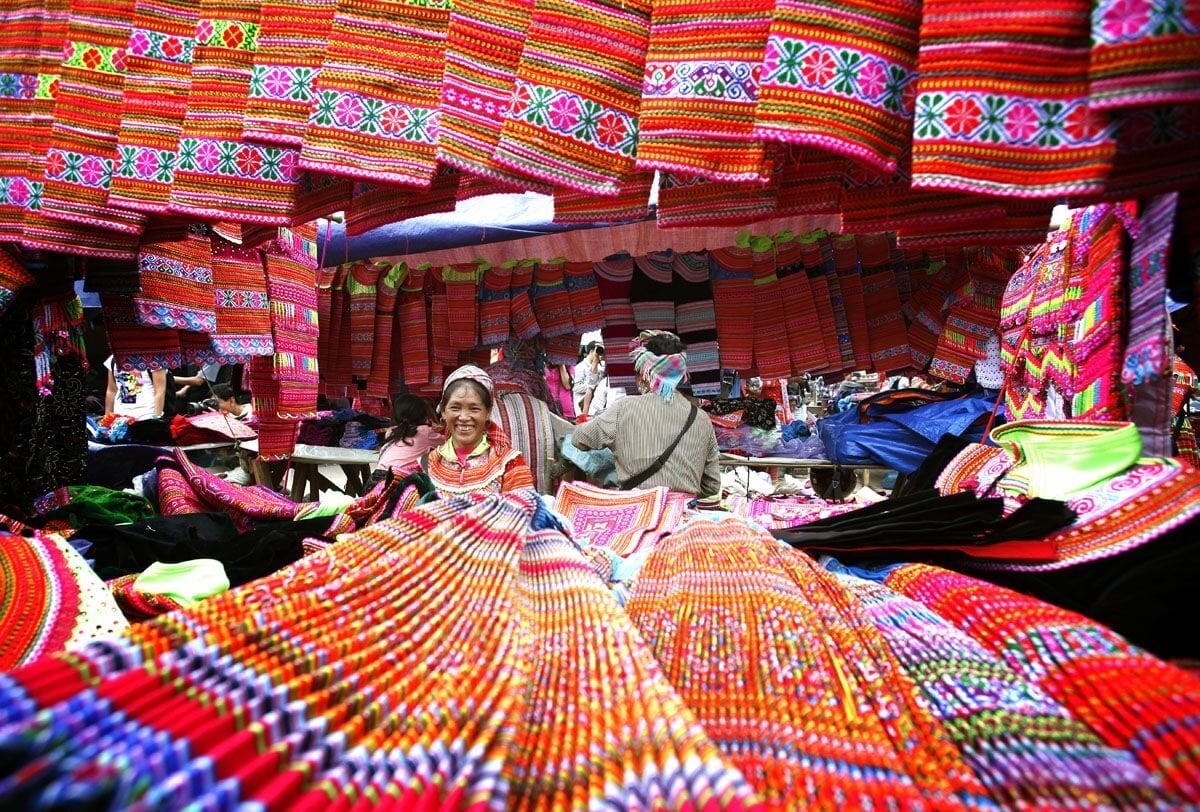
4.3 Taste local culinary delights
Dong Van’s traditional dishes are closely tied to its climate, crops, and ethnic heritage. At weekend markets, you can sample thắng cố (horse stew), mèn mén (steamed cornmeal), lợn cắp nách (grilled free-range pork),… Sticky rice cooked in bamboo and homemade corn wine are also local staples. These dishes reflect seasonal harvests and offer an authentic taste of highland life.
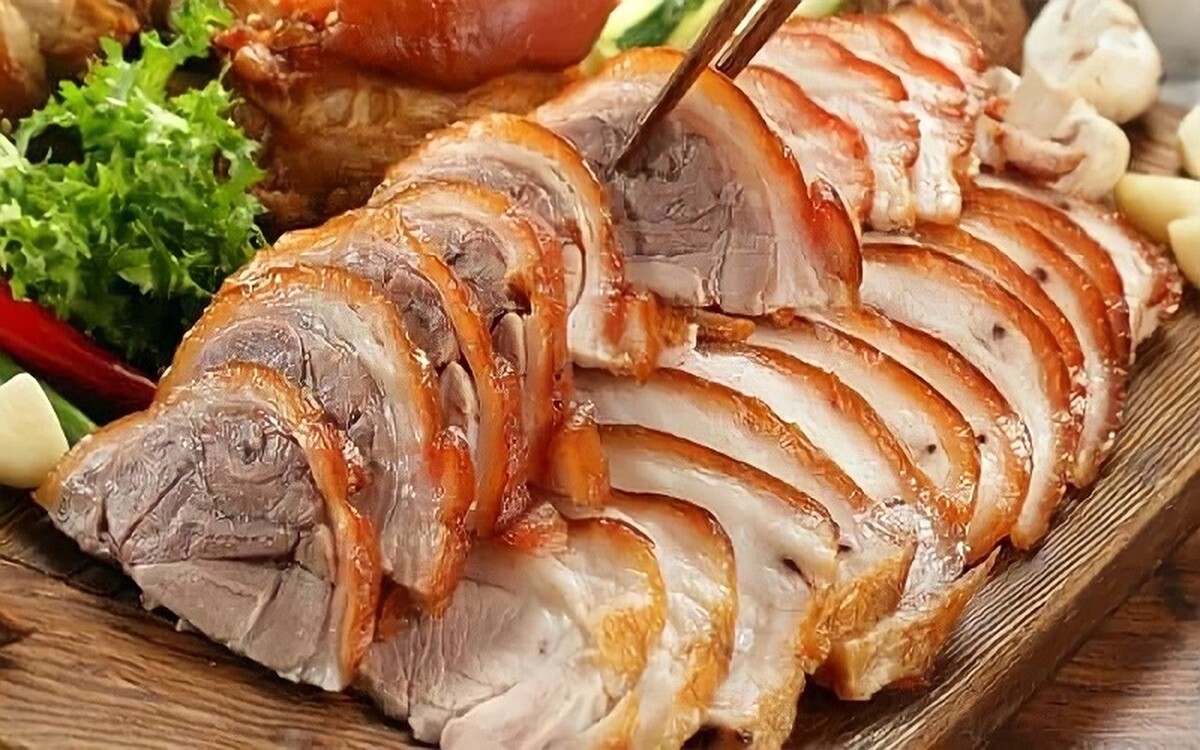
Pho Cao Ha Giang: A Vibrant Ethnic Market on the Karst Plateau
5. Where to stay in Dong Van Karst Plateau
For an authentic experience, ethnic homestays in villages like Ma Le, Du Gia, Dong Van let you stay with local families and enjoy simple comforts. If you prefer privacy and convenience, Dong Van Town offers hotels with private rooms, hot showers, modern amenities. For those seeking peace and natural scenery, eco-lodges in Yen Minh or Quan Ba are great options during multi-day journeys along the Ha Giang Loop.
6. Travel tips for exploring Dong Van Karst Plateau
Exploring Dong Van offers incredible experiences, but preparation makes all the difference. Keep these essential tips in mind to travel smart and respectfully:
- Respect local culture: Always ask before taking photos of ethnic residents and dress modestly when visiting villages.
- Hire a local guide: A guide can lead you to hidden spots, help with translation and deepen your cultural understanding.
- Prepare for changing weather: Bring layered clothing and rain gear to adapt to sudden shifts in temperature or rainfall.
- Carry enough cash: Most remote areas lack ATMs, so bring enough for meals, accommodation, small purchases.
- Be open to local cuisine: Traditional dishes may be unfamiliar, but trying them with an open mind shows respect for local culinary culture.
- Minimize waste: Bring a reusable bottle, avoid single-use plastics and dispose of trash responsibly to protect the environment.
7. Let Phieu Travel help you explore Dong Van Karst Plateau to the fullest!
Exploring Dong Van Karst Plateau can be challenging without local insight, reliable transport or proper planning. That’s where Phieu Travel, a Ha Giang-based operator, makes all the difference. With deep local roots and a flexible approach, we help you discover the plateau safely, meaningfully and at your own pace – as part of your Ha Giang Loop journey.
Here’s how Phieu Travel supports your journey:
- Local guides from ethnic communities: Gain authentic cultural insight and avoid tourist traps with native H’mong or Lo Lo guides.
- Well-maintained motorbikes and private cars: All vehicles are checked before departure to ensure safe travel across mountain roads.
- Flexible tour packages (2 days 1 night, 3 days 2 nights, 4 days 3 nights): Choose from self-riding, easy rider or private car tours tailored for solo travelers or small groups.
- Authentic homestays in Ma Le, Du Gia or Dong Van: Stay with local families, enjoy home-cooked meals and connect deeply with the highlands.
- End-to-end support: From packing tips to emergency help, our team is ready before, during and after your adventure.
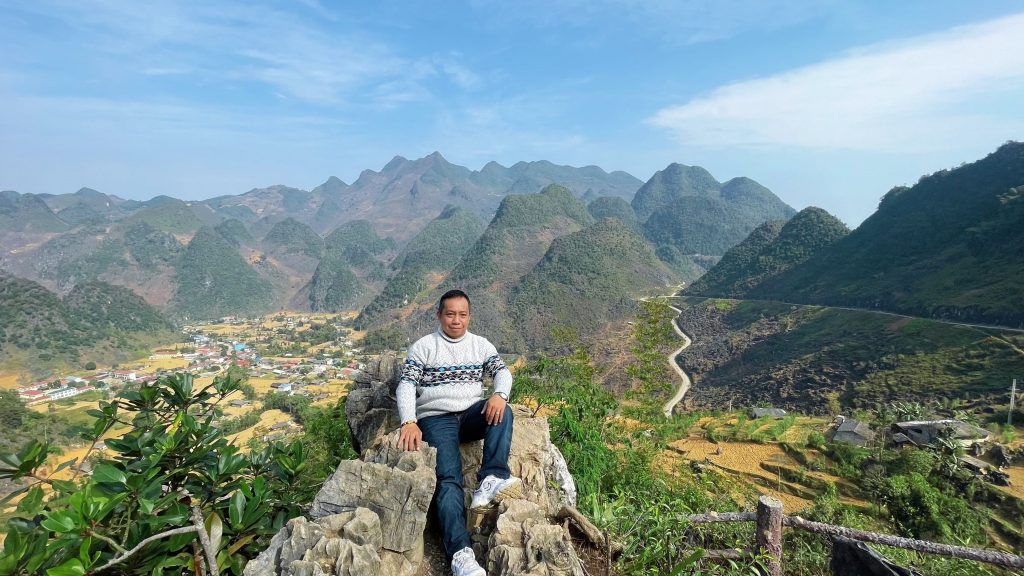
Phieutravel.com is your trusted companion on the journey through Dong Van Karst Plateau. With local roots and a heartfelt passion for Ha Giang, we go beyond guiding. We help you connect with the land, people and stories that make this region unforgettable. Let us turn your trip into an experience you’ll carry with you long after you leave!
Read more:
- Exploring Highland Cuisine: 20 Must-Try Dishes in Ha Giang
- Five-Colored Sticky Rice: An Exquisite Art of Highland Cuisine
- Ha Giang’s Buckwheat Flowers: History, Festival & Hidden Spots
- Is There a Ha Giang Airport and How to Reach Ha Giang by Air Travel

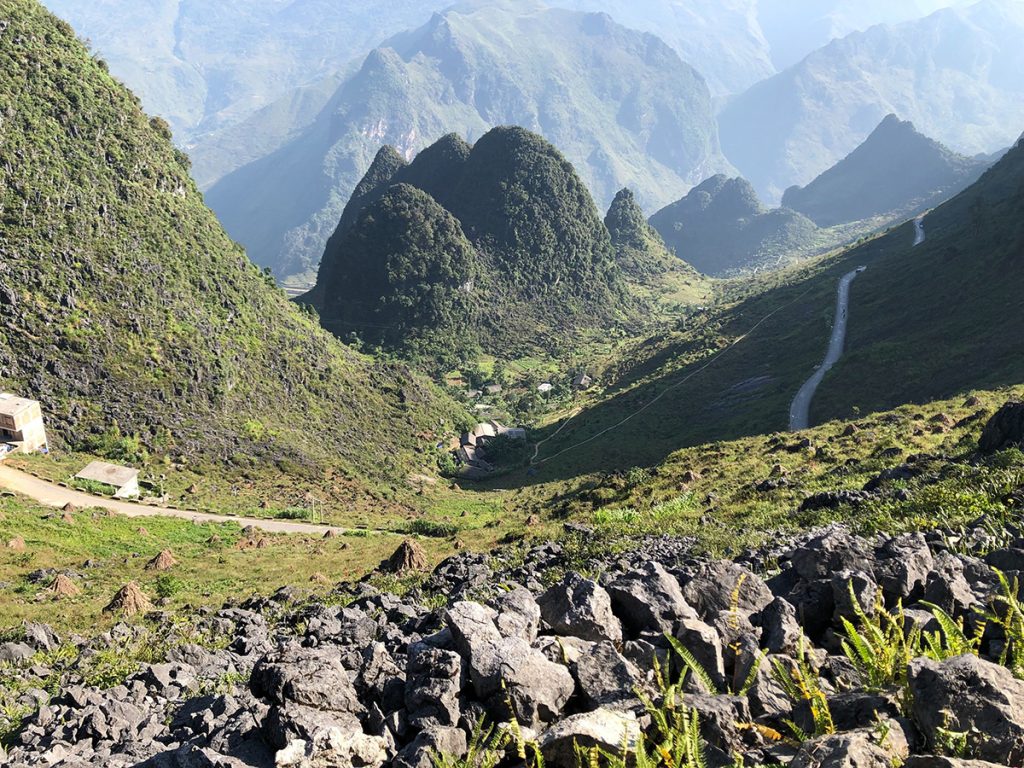
You Might Also Like
Ha Giang Weather in September: Complete Guide for Travelers
Exploring the magnificent Ha Giang Loop in September offers travelers a perfect balance of favorable[...]
Quan Ba Twin Mountains: Ha Giang’s Iconic Fairy Hills and Complete Travel Guide
The mystical Quan Ba Twin Mountains rise from the emerald valleys of Ha Giang like[...]
Vuong family mansion: the architectural marvel and cultural legacy of Ha Giang
Deep in Vietnam’s northern highlands, where mist-shrouded mountains meet terraced rice fields, stands a testament[...]
Ha Giang Loop Safety Tips: How to Ride Securely in Vietnam’s Northern Mountains
The Ha Giang Loop, with its winding mountain roads and breathtaking landscapes, offers one of[...]
The Ultimate Guide to the M-Shaped Curve on Ha Giang Loop
Vietnam’s remote northern province of Ha Giang hides a natural wonder that has captivated adventurous[...]
Most Beautiful Places to Visit in Vietnam: Essential Destinations and Insider Tips
Vietnam captivates travelers with its stunning landscapes, rich cultural heritage, and warm hospitality. From mist-shrouded[...]
Beyond the Beaten Path: Discovering Ha Giang Province in Northeast Vietnam
Ha Giang Province in Northeast Vietnam stands as one of the country’s last frontiers for[...]
Rainy season in Ha Giang: what to expect, when to go, and travel tips
Vietnam’s northern frontier reveals a different face during the rainy season, transforming Ha Giang’s limestone[...]